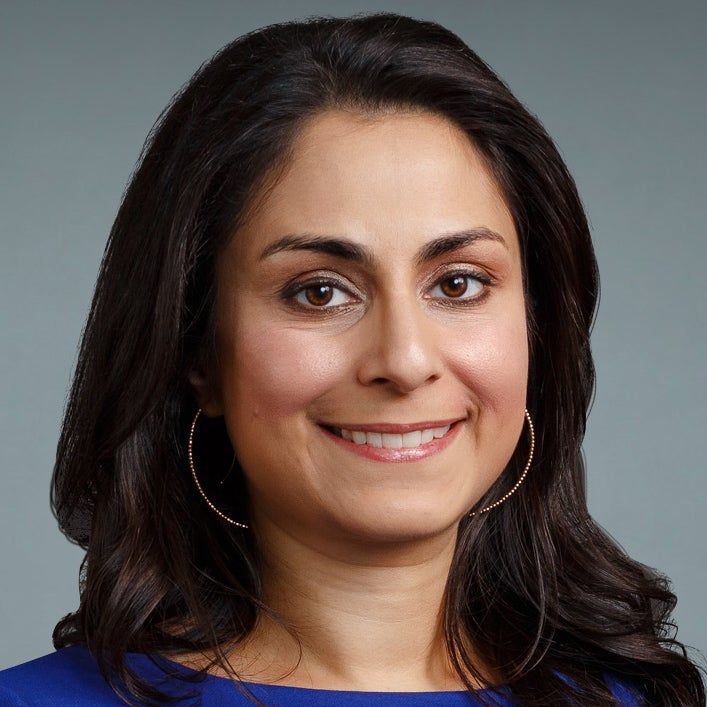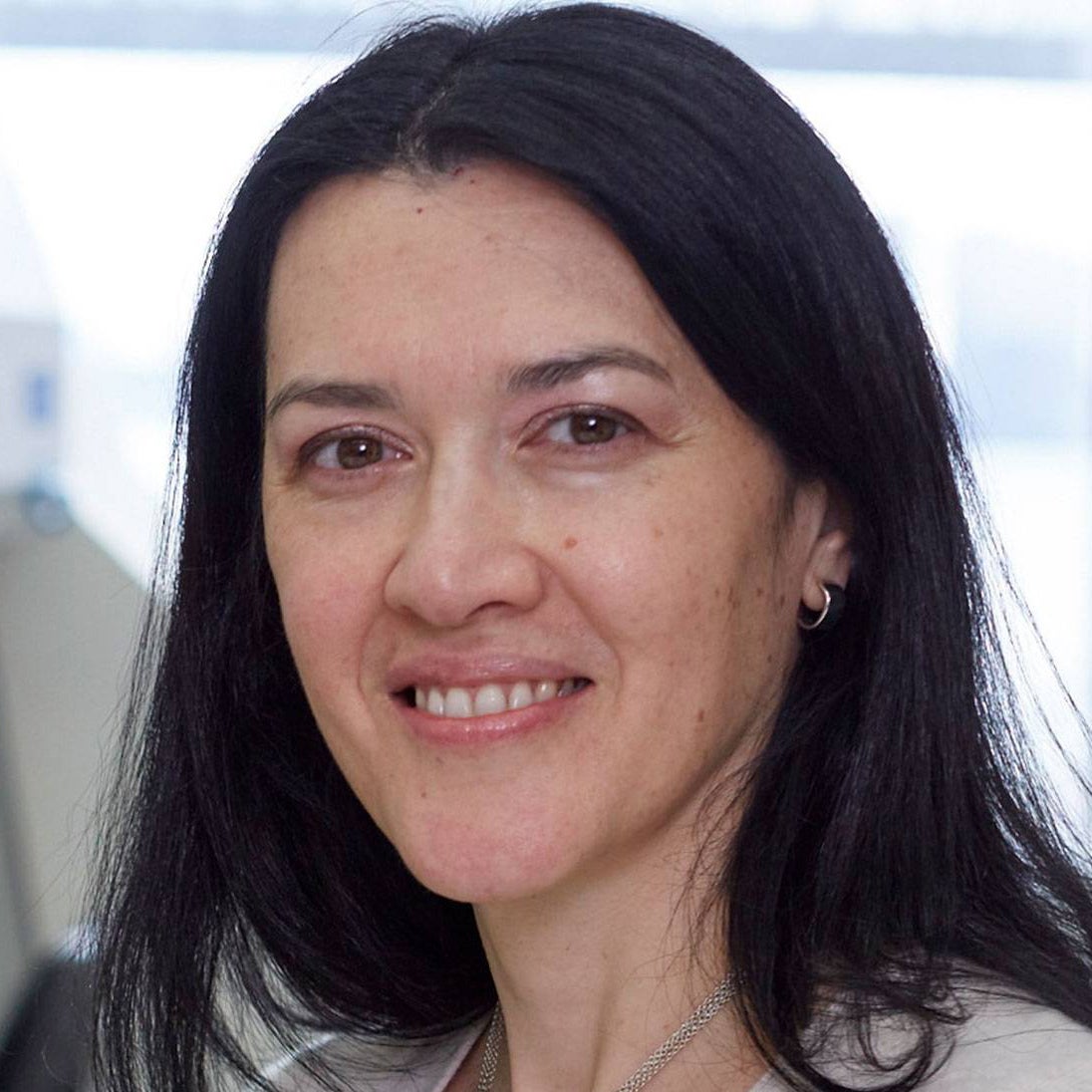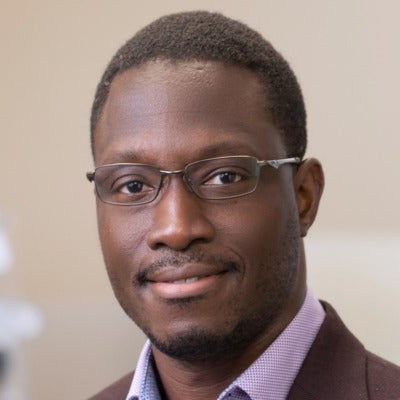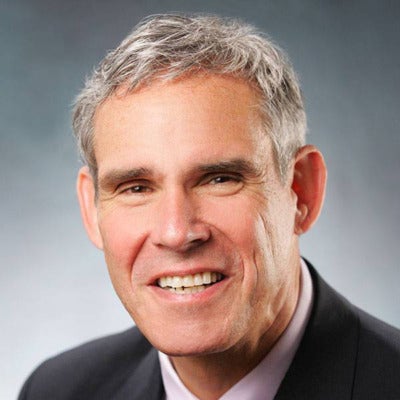Dec. 17th Event: The Latest on Omicron, Boosters, and Immunity
Kira Peikoff was the editor-in-chief of Leaps.org from 2017 to 2021. As a journalist, her work has appeared in The New York Times, Newsweek, Nautilus, Popular Mechanics, The New York Academy of Sciences, and other outlets. She is also the author of four suspense novels that explore controversial issues arising from scientific innovation: Living Proof, No Time to Die, Die Again Tomorrow, and Mother Knows Best. Peikoff holds a B.A. in Journalism from New York University and an M.S. in Bioethics from Columbia University. She lives in New Jersey with her husband and two young sons. Follow her on Twitter @KiraPeikoff.

The Omicron variant poses new uncertainty for the vaccines, which four leading experts will address during our virtual event on December 17th, 2021.
This virtual event will convene leading scientific and medical experts to discuss the most pressing questions around the new Omicron variant, including what we know so far about its ability to evade COVID-19 vaccines, the role of boosters in eliciting heightened immunity, and the science behind variants and vaccines. A public Q&A will follow the expert discussion.
EVENT INFORMATION:
Date: Friday Dec 17, 2021
2:00pm - 3:30pm EST

Dr. Céline Gounder, MD, ScM, is the CEO/President/Founder of Just Human Productions, a non-profit multimedia organization. She is also the host and producer of American Diagnosis, a podcast on health and social justice, and Epidemic, a podcast about infectious disease epidemics and pandemics. She served on the Biden-Harris Transition COVID-19 Advisory Board.
 Dr. Theodora Hatziioannou, Ph.D., is a Research Associate Professor in the Laboratory of Retrovirology at The Rockefeller University. Her research includes identifying plasma samples from recovered COVID-19 patients that contain antibodies capable of neutralizing the SARS-CoV-2 coronavirus.
Dr. Theodora Hatziioannou, Ph.D., is a Research Associate Professor in the Laboratory of Retrovirology at The Rockefeller University. Her research includes identifying plasma samples from recovered COVID-19 patients that contain antibodies capable of neutralizing the SARS-CoV-2 coronavirus.

Dr. Onyema Ogbuagu, MBBCh, is an Associate Professor at Yale School of Medicine and an infectious disease specialist who treats COVID-19 patients and leads Yale’s clinical studies around COVID-19. He ran Yale’s trial of the Pfizer/BioNTech vaccine.

Dr. Eric Topol, M.D., is a cardiologist, scientist, professor of molecular medicine, and the director and founder of Scripps Research Translational Institute. He has led clinical trials in over 40 countries with over 200,000 patients and pioneered the development of many routinely used medications.
This event is the fourth of a four-part series co-hosted by Leaps.org, the Aspen Institute Science & Society Program, and the Sabin–Aspen Vaccine Science & Policy Group, with generous support from the Gordon and Betty Moore Foundation and the Howard Hughes Medical Institute.

Kira Peikoff was the editor-in-chief of Leaps.org from 2017 to 2021. As a journalist, her work has appeared in The New York Times, Newsweek, Nautilus, Popular Mechanics, The New York Academy of Sciences, and other outlets. She is also the author of four suspense novels that explore controversial issues arising from scientific innovation: Living Proof, No Time to Die, Die Again Tomorrow, and Mother Knows Best. Peikoff holds a B.A. in Journalism from New York University and an M.S. in Bioethics from Columbia University. She lives in New Jersey with her husband and two young sons. Follow her on Twitter @KiraPeikoff.
More Families Are Using Nanny Cams to Watch Elderly Loved Ones, Raising Ethical Questions
Jackie Costanzo and her 93-year-old mom, Louise, are happy to have an extra way to stay connected with the camera, which is normally placed on a television stand facing her mom's bed.
After Jackie Costanzo's mother broke her right hip in a fall, she needed more hands-on care in her assisted-living apartment near Sacramento, California. A social worker from her health plan suggested installing a video camera to help ensure those services were provided.
Without the camera, Costanzo wouldn't have a way to confirm that caregivers had followed through with serving meals, changing clothes, and fulfilling other care needs.
When Costanzo placed the device in May 2018, she informed the administrator and staff, and at first, there were no objections. The facility posted a sign on the apartment's front door, alerting anyone who entered of recording in progress.
But this past spring, a new management company came across the sign and threatened to issue a 30-day eviction notice to her 93-year-old mother, Louise Munch, who has dementia, for violating a policy that prohibits cameras in residents' rooms. With encouragement from California Advocates for Nursing Home Reform, Costanzo researched the state's regulations but couldn't find anything to support or deny camera use. She refused to remove the recording device and prevailed.
"In essence, my mom was 'grandfathered in' because she moved in under a management company that did not specify that residents could not have cameras," says Costanzo, 73, a retired elementary schoolteacher who lives a three-hour drive away, in Silicon Valley, and visits one day every two weeks. Without the camera, Costanzo, who is her mother's only surviving child, wouldn't have a way to confirm that caregivers had followed through with serving meals, changing clothes, and fulfilling other care needs.
As technological innovations enable next of kin to remain apprised of the elderly's daily care in long-term care facilities, surveillance cameras bring legal and privacy issues to the forefront of a complex ethical debate. Families place them overtly or covertly—disguised in a makeshift clock radio, for instance—when they suspect or fear abuse or neglect, so they can maintain a watchful eye, perhaps deterring egregious behavior. But the cameras also capture intimate caregiving tasks, such as bathing and toileting, as well as dressing and undressing, which may undermine the dignity of residents.
So far, laws or guidelines in eight states—Illinois, Maryland, New Mexico, Oklahoma, Texas, Utah, Virginia, and Washington—have granted families the rights to install cameras in a resident's room. In addition, about 15 other states have proposed legislation. Some states, such as Pennsylvania, have put forth regulatory compliance guidance, according to a column published in the July/August 2018 issue of Annals of Long-Term Care.
The increasing prevalence of this legislation has placed it on the radar of long-term care providers. It also suggests a trend to clarify responsible camera use in monitoring services while respecting privacy, says Victor Lane Rose, the column's editor and director of aging services at ECRI Institute, a health care nonprofit near Philadelphia, Pennsylvania.
In most cases, a resident's family installs a camera or instigates a request in hopes of sparing their loved one from the harms of abuse, says James Wright, a family physician who serves as the ethics committee's vice chair of the Society for Post-Acute and Long-Term Care Medicine in Columbia, Maryland. A camera also allows the family to check in on the resident from afar and remain on alert for a potential fall or agitated state, he says.
"It's rare that a facility will have 24-hour presence in a patient's room. You won't have a nurse in there all the time," says Wright, who is also medical director of two long-term care centers and one assisted-living facility around Richmond, Virginia. Particularly "with dementia, the family often wonders" if their loved one is safe.
While offering families peace of mind, he notes that video cameras can also help exonerate caregivers accused of abuse or theft. Hearing aids, which typically cost between $2,000 and $3,000 each, often go missing. By reviewing a video together, families and administrators may find clues to a device's disappearance. Conversely, Wright empathizes with the main counterargument against camera use, which is the belief that "invasion of privacy is also invasion of human dignity."
In respecting modesty, ethical questions abound over whether a camera should be turned off when a patient is in the midst of receiving personal care, such as dressing and undressing or using bedpans. Other ethical issues revolve around who may access the recordings, says Lori Smetanka, executive director of the National Consumer Voice for Quality Long-Term Care in Washington, D.C.
Video cameras, she contends, are only one tool in shielding residents from abuse. They are "not substitutes for personal involvement," she says. "People need to be very vigilant visiting their family members, and facilities have a responsibility to ensure that residents are free of abuse."
Lack of accountability perpetuates abuse in long-term care settings and stems in large part from systemic underfunding.
Educating employees in abuse prevention becomes paramount, and families should ask about staff training before placing their loved one in a long-term care facility, Smetanka says. Prior to installing a camera, she recommends consulting an attorney who is familiar with this issue.
But thoughts of a camera often don't occur to families until an adverse event affects their loved one, says Toby Edelman, a senior policy attorney at the Center for Medicare Advocacy, a nonprofit organization with headquarters in Washington, D.C., and Connecticut.
"These cameras can show exactly what's going on," she explains, noting that prosecutors have used the recordings in litigation. "When residents have injuries of unknown origin" and they can't verbalize what happened to them, "the cameras may document that yes, the resident was actually hit by somebody."
With a resident's safety and security being "the most important consideration," the American Health Care Association in Washington, D.C., which represents long-term and post-acute care providers, supports allowing states, clinicians, and patients to decide about camera use on a local level, says David Gifford, senior vice president of quality and regulatory affairs and chief medical officer.
"We've seen some success with tools such as permissive legislation, where residents and their loved ones have the ability to determine whether a camera is right for them while working with the center openly and ensuring the confidentiality of other residents," says Gifford, who practiced as a geriatrician. "It is important to note, however, that surveillance cameras are still only one element of the quality matrix. We can never hope to truly improve quality care by catching bad actors after the fact."
Lack of accountability perpetuates abuse in long-term care settings and stems in large part from systemic underfunding. Low wages and morale are tied to high turnover, and cameras don't address this overarching problem, says Clara Berridge, an assistant professor of social work at the University of Washington in Seattle, who has co-authored articles on surveillance devices in elder care.
Employees often don't perceive a nursing assistant position as a long-term career trajectory and may not feel vested in the workplace. Training in the recognition and reporting of abuse becomes ineffective when workers quit shortly thereafter. Many must juggle multiple jobs to make ends meet. Staffing shortages are endemic, leading to inadequate oversight of residents and voicing of abuse complaints, she says.
In Berridge's assessment, cameras may do more harm than good. Respondents to a survey she conducted of nursing homes and assisted-living facilities in the United States found that recording devices tend to fuel workers' anxiety amid a culture that further demoralizes and dehumanizes the care they provide.
Consent becomes particularly thorny in shared rooms, which are more common than not in nursing homes. States that permit in-room cameras mandate that roommates or their legal representative be made aware. Even if the camera is directed away from their bed, it will still capture conversations as well as movements that enter its scope. "Surveillance isn't the best way to protect adults in need of support," Berridge says. "Public investment in quality care is."
"The camera is invaluable. But there's no law that says you can have it automatically, so that's wrong."
In the one-bedroom assisted-living apartment where Costanzo's mother lives alone, consent from another resident wasn't needed. Without a roommate, the camera is much less intrusive, although Costanzo wishes she had put one in the living room, not just the bedroom, for more security.
Her safety concerns escalated when she read about a Texas serial killer who smothered victims after gaining access to senior care facilities by "masquerading as a maintenance man." She points to such horrifying incidents, although exceedingly rare, as further justification for permitting cameras to help guard the vulnerable against abuse in long-term care settings. And she hopes to advocate for an applicable law in California.
"The camera is invaluable," says Costanzo, who pays for monthly Wi-Fi service so she can see and interact with her mother, who turns 94 in October, any time of day or night. "But there's no law that says you can have it automatically, so that's wrong."
Scientists Used Fruit Flies to Quickly Develop a Personalized Cancer Treatment for a Dying Man
Genetically engineered fruit flies are being used in early research to screen novel combinations of cancer drugs for individual patients.
Imagine a man with colorectal cancer that has spread throughout his body. His tumor is not responding to traditional chemotherapy. He needs a radically effective treatment as soon as possible and there's no time to wait for a new drug or a new clinical trial.
A plethora of novel combinations of treatments can be screened quickly on as many as 400,000 flies at once.
This was the very real, and terrifying, situation of a recent patient at Mount Sinai Medical Center in New York City. So his doctors turned to a new tactic to speed up the search for a treatment that would save him: Fruit flies.
Yes, fruit flies. Those annoying little buggers that descend on opened food containers are actually leading scientists to fully personalized cancer treatments. Oncology advances often are more about about utilizing old drugs in new combinations than about adding new drugs. But classically, the development of each new chemotherapy drug combination has required studies involving numerous patients spread over many years or decades.
With the fruit fly method, however, a novel treatment -- in the sense that a particular combination of drugs and the timing of their administration has never been used before -- is developed for each patient, almost like on Star Trek, when, faced suddenly with an unknown disease, a futuristic physician researches it and develops a cure quickly enough to save the patient's life.
How It Works
Using genetic engineering techniques, researchers produce a population of fruit fly embryos, each of which is programmed to develop a replica of the patient's cancer.
Since a lot of genetically identical fly embryos can be created, and since they hatch from eggs within 30 hours and then mature within days, a plethora of novel combinations of treatments can be screened quickly on as many as 400,000 flies at once. Then, only the regimens that are effective are administered to the patient.
Biotech entrepreneur Laura Towart, CEO of the UK- and Ireland-based company, My Personal Therapeutics, is partnering with Mount Sinai to develop and test the fruit fly tactic. The researchers recently published a paper demonstrating that the tumor of the man with metastatic colorectal cancer had shrunk considerably following the treatment, and remained stable for 11 months, although he eventually succumbed to his illness.
Open Questions
Cancer is in fact many different diseases, even if it strikes two people in the same place, and both cancers look the same under a microscope. At the level of DNA, RNA, proteins, and other molecular factors, each cancer is unique – and may require a unique treatment approach.
Determining the true impact on cancer mortality will require clinical trials involving many more patients.
"Anatomy of a cancer still plays a major role, if you're a surgeon or radiation oncologist, but the medical approach to cancer therapy is moving toward treatments that are personalized based on other factors," notes Dr. Howard McLeod, an internationally recognized expert on cancer genetics at the Moffitt Cancer Center, in Tampa, Florida. "We are also headed into an era when even the methods for monitoring patients are individualized."
One big unresolved question about the fruit fly screening approach is how effective it will be in terms of actually extending life. Determining the true impact on cancer mortality will require clinical trials involving many more patients.
Next Up
Using machine learning and artificial intelligence, Towart is now working to build a service called TuMatch that will offer rapid and affordable personalized treatment recommendations for all genetically driven cancers. "We hope to have TuMatch available to patients with colorectal/GI cancers by January 2020," she says. "We are also offering [the fruit fly approach] for patients with rare genetic diseases and for patients who are diabetic."
Are Towart's fruit flies the answer to why the man's tumor shrunk? To be sure, the definitive answer will come from further research that is expected soon, but it's also clear that, prior to the treatment, there was nothing left to do for that particular patient. Thus, although it's early in the game, there's a pretty good rationale for optimism.

